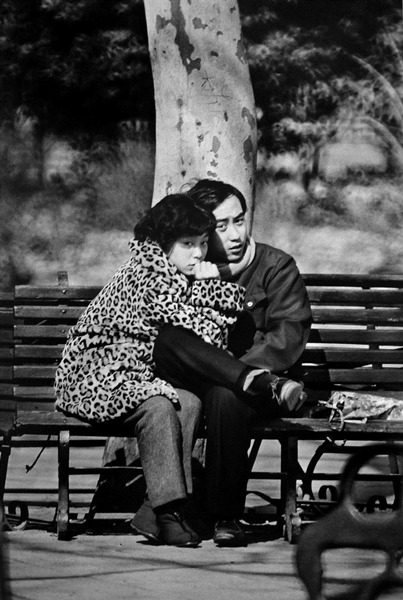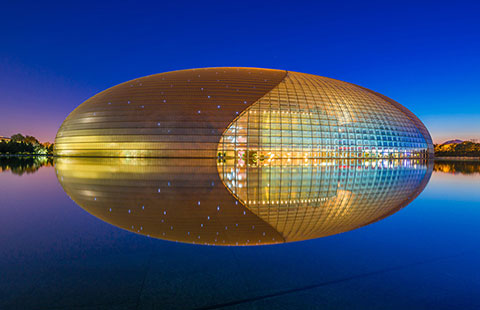Fossilizing memories and history
Updated: 2015-10-03 02:51
By ZHANG KUN in Shanghai(China Daily)
|
||||||||
 |
|
03. A young couple in Shanghai People's Park in 1978 when dating in public was still not widely acceptable in society. photos by liu Heung Shing for china daily |
One of his most famous works showed workers taking Chairman Mao’s portrait off the facade of the National Museum of Chinese History on the east side of Tiananmen Square. That particular photo is now regarded as one of the most important images signifying the end of an era in China.
“At the time when I took that picture, nobody realized what it meant, not even the workers themselves. They thought it was just a routine cleaning process,” Liu recalled.
It has now become a luxury for a publication or news agency to send a photographer to a foreign country, Liu said. In the past, a photojournalist would arrive in a strange country and experience the local lifestyle without much pressure. He or she will also be granted a few years to immerse himself into the local life and culture, filing reports from the field. Some great photographers, such as Henri Cartier-Bresson (1908-2004), created their most celebrated works this way.
“I might be the last generation of them,” Liu said. “Photojournalism has changed so much.”
He added that news publications and agencies nowadays would instead hire local photographers because it is more economic and efficient. He said that this has resulted in the loss of a “fresh pair of eyes” and the unique observation of an experienced journalist or artist from another land.
Having been in China for so long, Liu believes there is an urgent need to improve lateral thinking in China’s education system before the standard of photography in the country can improve. He hopes that the Shanghai Center of Photography (SCoP) will be able to foster a systematic and effective narrative to rectify this.
- Senior US envoy to visit Japan, S Korea, China
- Russia, US agree to cooperate in solving Syria crisis: Russian FM
- Iranian President calls Iran deal victory over war
- LatAm experts praise Xi on yuan, globalization
- Evidence found of summertime water flows on Mars: study
- Dogs surf in contest in California

 Ten highlights from Xi's trip to US and UN
Ten highlights from Xi's trip to US and UN
 Top 10 life-changing benefits from Xi's US visit
Top 10 life-changing benefits from Xi's US visit-
 Highlights of President Xi's speeches at UN
Highlights of President Xi's speeches at UN -
 The president's historic journey to the west
The president's historic journey to the west -
 China's first lady visits Juilliard School
China's first lady visits Juilliard School 
 Polish couple brings six daughters to China to study Chinese
Polish couple brings six daughters to China to study Chinese
 Top 10 nominated designs at Beijing Design Week
Top 10 nominated designs at Beijing Design Week-
 China gifts the UN 'Zun of Peace' for 70th anniversary
China gifts the UN 'Zun of Peace' for 70th anniversary
Most Viewed
Editor's Picks

|

|

|

|

|

|
Today's Top News
Xi pledges $2 billion to help developing countries
Young people from US look forward to Xi's state visit: Survey
US to accept more refugees than planned
Li calls on State-owned firms to tap more global markets
Apple's iOS App Store suffers first major attack
Japan enacts new security laws to overturn postwar pacifism
Court catalogs schools' violent crimes
'Beauty of Beijing's alleys akin to a wise, old person'
US Weekly

|

|







